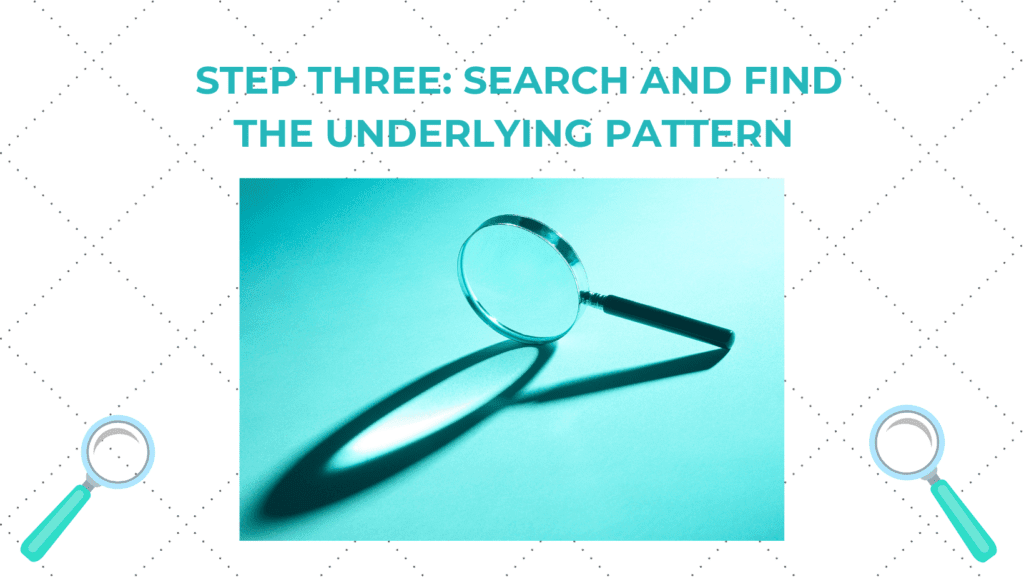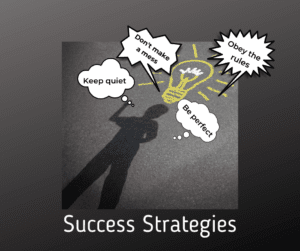
Step Three: Search and Find the Underlying Pattern
(Part 2 of 2)
In Part 1, you learned what a paradigm map was and the type of questions that you would be asked to expand it. Giving the space for exploration and slowing down the process enables you to clearly identify anything you are unaware of and then make conscious decisions.
Part 2 describes finding the underlying patterns, how they formed and are limiting, and exploring paradigms. First, second, and third-order problems will be illustrated as examples of a paradigm’s layers. Going deeper to discover your patterns can be a grand adventure where you’re searching for a new sense of self.
The Process of Finding the Underlying Patterns
When you want to change something, such as a behavior pattern, 
- What is the current paradigm? (Using the Paradigm Map.)
- How did it form, and how did it help you?
- How is it limiting you now?
You can start anywhere, but “strategies” is usually a solid place. “Actions” follow “strategies” and then “outcomes.”
How the Paradigm Formed
As previously mentioned, paradigms generally are created in your formative years to help you cope with challenging home life. You may be asked: When did you first notice this behavior pattern? How did the pattern help you manage that time in your life?
To uncover the hidden conditions that locked your paradigm in place, using questions that reveal the layers are posed. They identify what are called first, second, and third-order problems.
First-Order Problem: The first-order problem is your presenting problem, what you are looking to fix. An example might be that you judge yourself, others, and situations.
Second-Order Problem: The second-order problem is the cause of the first-order problem. Staying with the above example might be that you judge because you don’t feel good about yourself and lack self-esteem.
Third-Order Problem: The third-order problem is the pattern that keeps the second-order problem locked in place. You don’t want to face the fact that you keep judging yourself and others because your parents humiliated you repeatedly, which laid the foundation for it to continue in your adult life.
How is the Paradigm Limiting?
You are stuck, and you can’t get past something; it’s created a problem for you. More likely than not, it’s an underlying paradigm causing your stuckness, 
You already discovered how it helped you deal with situations. Now it’s time to find out how it limits you.
Questions that may be asked:
- How is the behavior pattern limited you in life?
- What beliefs do you have that you’ve never questioned? Are they true? How do you know they are true?
- What are some of the underlying thoughts and beliefs that keep shaping this pattern?
Exploring Paradigms
The key to exploring paradigms is to have enough space within a safe container that will allow you to do a deeper dive into the pattern. A skillful coach will provide 
Please reach out and connect with me if you have any questions—or schedule a complimentary 15-minute discovery call for more information.
Blessings, and until then, Be Conscious!
Debbie

